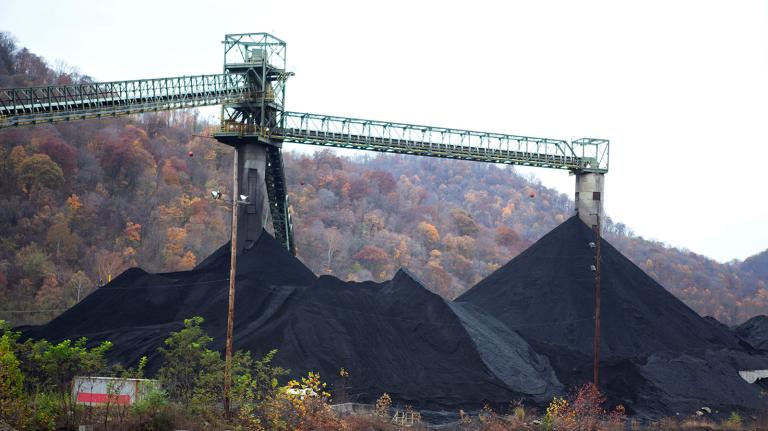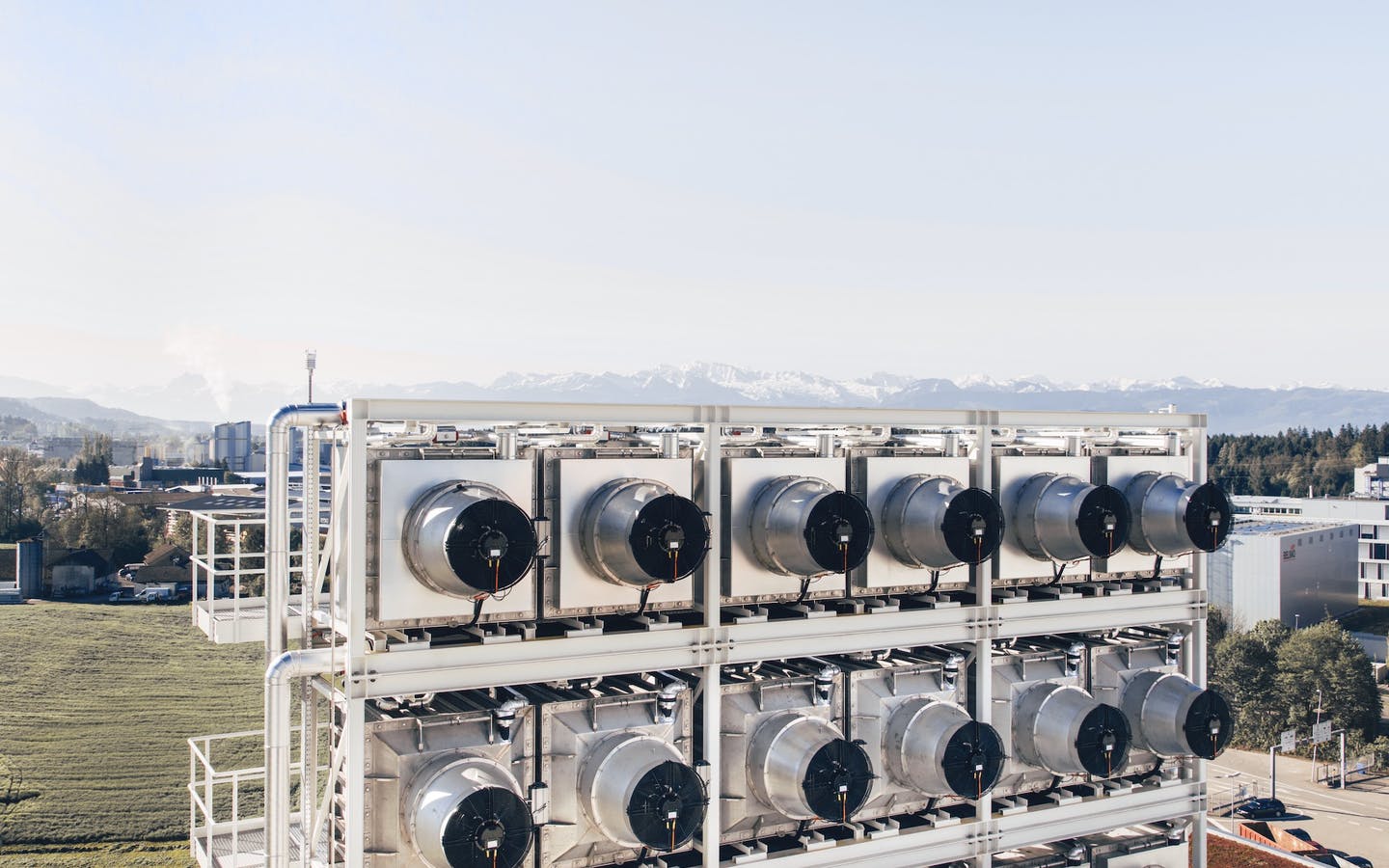On Earth Day 2021, 40 leaders from around the world came together for the virtual Climate Summit and made pledges to reduce emissions, work toward climate neutrality, and other similarly lofty goals. Missing from the conversation was a crucial fact: If we want to achieve a livable planet for future generations, it’s not enough to just cut current emissions. We need to draw down the massive amounts of greenhouse gases that are already in the atmosphere and altering our climate.
After decades of data analysis and number crunching around how to keep our planet livable, Sanjeev Khagram, dean of the Thunderbird School of Global Management in Arizona, says that he’s come to an inescapable conclusion: “There’s no mathematical way for us to achieve our climate mitigation goals without CO2 removal,” he says. That’s why Khagram is spearheading the Global Carbon Removal Partnership, an international consortium of sustainability advocates working to create financial and policy incentives to achieve climate restoration.
Cutting emissions, while necessary, won’t be enough to make our climate habitable for humanity. Erica Dodds, the chief operating officer for the Foundation for Climate Restoration, points out that 95 percent of the CO2 that is altering our planet is already present in our atmosphere. Only 5 percent comes from current sources of pollution. “We need to focus on reducing current emissions, of course, but we don’t want to lose sight of the CO2 that’s already in the atmosphere that we need to deal with,” she says.
As Kahgram puts it, “We as a human species flourished when CO2 was somewhere between 250 to 350 parts per million. Now we’re at over 400 parts per million. To survive and thrive, we need to restore our climate.”
A cutting-edge solution
We can and should draw down CO2 via reforestation and regenerative agricultural practices. But nature-based solutions like planting trees cannot be scaled indefinitely; they require huge quantities of water and lots of space. Plus, the permanence of the removed CO2 cannot always be guaranteed: wildfires and deforestation can destroy the trees and release that CO2 back into the atmosphere. So in addition to reforestation and emission reduction, in the race to reduce CO2 levels, we also need a new generation of technological solutions.
Enter carbon capture — a technology that captures CO2 and sequesters it, either by repurposing the carbon, or permanently storing it deep beneath the Earth’s surface. Some companies focus on capturing the carbon dioxide at the point of its creation (such as a factory), which reduces the amount of CO2 being added to our atmosphere but does nothing to reduce the existing atmospheric CO2 that is altering our climate.
“Direct air capture of CO2 is the most durable and long-term solution we have for reducing atmospheric levels,” Kahgram says. Known as DAC, the technology moves beyond emissions reductions to actively draw down the legacy CO2 that we’ve been spewing into our atmosphere for the past couple centuries.
“You can think of the technology like the suckers on octopus tentacles — chemicals that selectively latch onto that CO2 and nothing else,” says David Heldebrant, a chief research scientist at Pacific Northwest National Laboratory (PNNL). He explains that the process can then be reversed, with either heat or an electrical charge, to release the captured CO2 for storage or use.
There are numerous public and private efforts around the globe focused on DAC technologies. Swiss company Climeworks will soon complete the world’s largest direct air capture and storage station atop a mountain in Iceland, which will have the capacity to capture 4,000 tons of CO2 every year. The CO2 it pulls from the air will be injected deep into the ground, where natural processes will turn it to stone. The Icelandic site was selected both because it had renewable geothermal energy sources nearby and the optimal geologic conditions to quickly convert CO2 to rock, locking it away forever.
Reduce, reuse
Another Climeworks facility is in the works outside the Rotterdam airport in the Netherlands. Once completed, it will capture CO2 from the air and convert it into renewable jet fuel. It’s part of a global surge in utilizing captured carbon.
“CO2 is a material you can use everywhere,” says Daniel Egger, Climeworks’ head of marketing and sales. “Many, many things are based on carbon, and if you have something based on carbon, you can use captured CO2 as the raw material to produce it.”
Industries worldwide are following Climeworks’ lead, piloting technologies to utilize captured CO2 in products ranging from green building materials and aggregate for construction to various types of plastic. McKinsey & Company estimates that the market for products made from CO2 could be worth as much as $1 trillion by 2030.
“The technology exists,” says Heldebrant of PNNL, “and now it comes down to how much is it going to cost per metric ton to remove carbon from the air.” He believes prices for DAC will come down dramatically over the coming decade, similar to how solar panel costs have plummeted over the past ten years.
Heldebrant is part of a team at PNNL that won a U.S. Department of Energy grant in 2020 to investigate new DAC technologies. “Climeworks has the best-in-class technology in this area, and we’re now working on the fundamental science to create further innovation,” says Roger Rousseau, who’s leading the research team. “It’s not going to be a single silver bullet that’s going to solve this problem; it’s going to be a lot of people working on this over time.”
There is no shortage of interest or investment to move DAC technology forward. The Musk Foundation and Space-X are now offering the largest financial award ever given, a $100 million X-Prize, to develop technology that removes CO2 directly from the atmosphere at the gigaton scale. “I expect the participants will have a lot of innovation in terms of technology and scalability,” Dodds says of the X-Prize competition. “That will be key in sparking innovation.”
With Earth Day behind us, we’re now back to the daily grind of combating climate change by leveraging every single tool at our disposal, both nature- and technology-based. “Of all the solutions we have available for climate restoration, direct air capture will become our single greatest tool to remove carbon from the atmosphere,” Khagram says. “Without question.”
In order to restore Earth, we need to restore a healthy balance of CO₂. Carbon dioxide removal solutions can contribute to this. Climeworks operates multiple direct air capture plants and is currently building the world’s biggest climate-positive direct air capture plant! With Climeworks, everyone can remove their own carbon dioxide emissions from the air.





